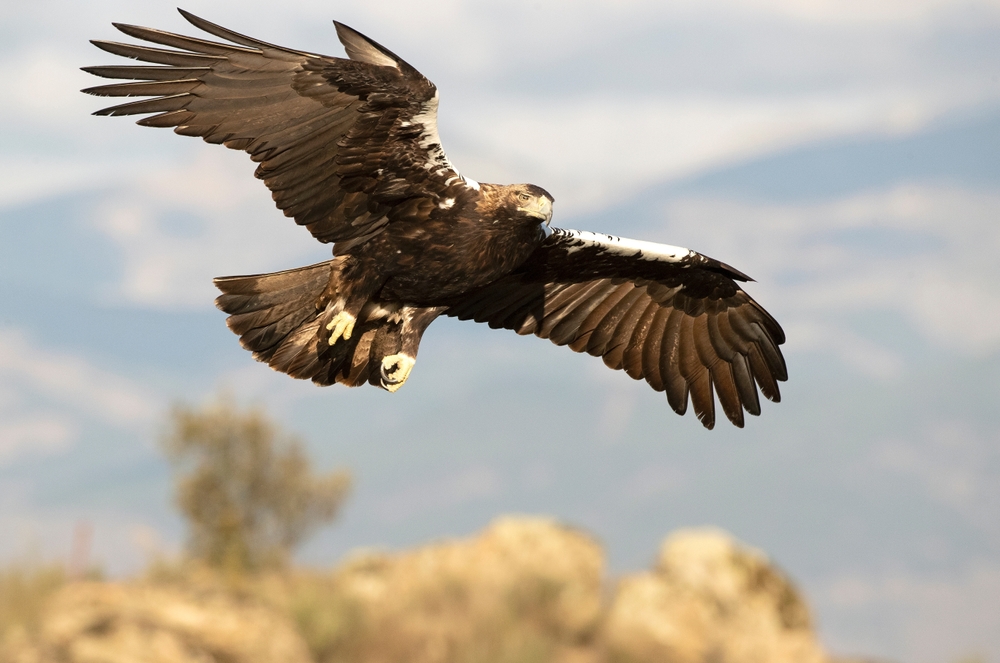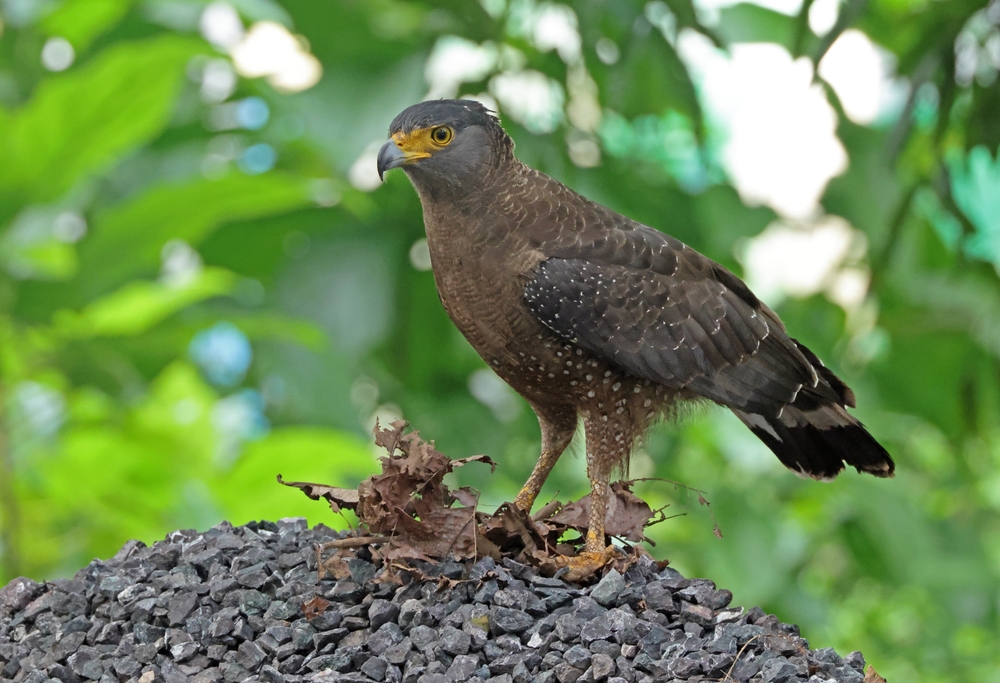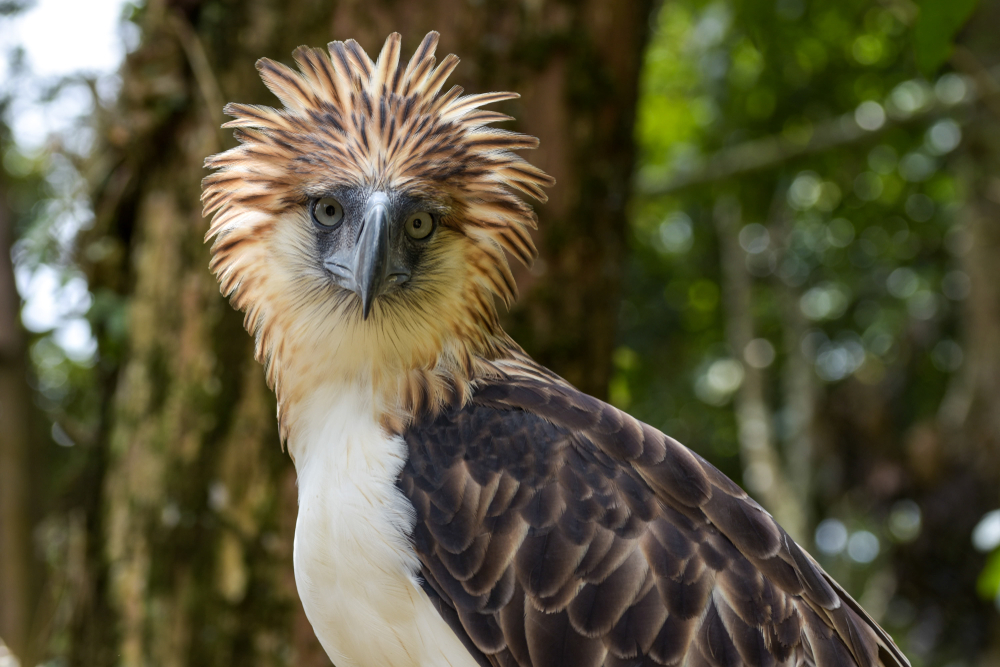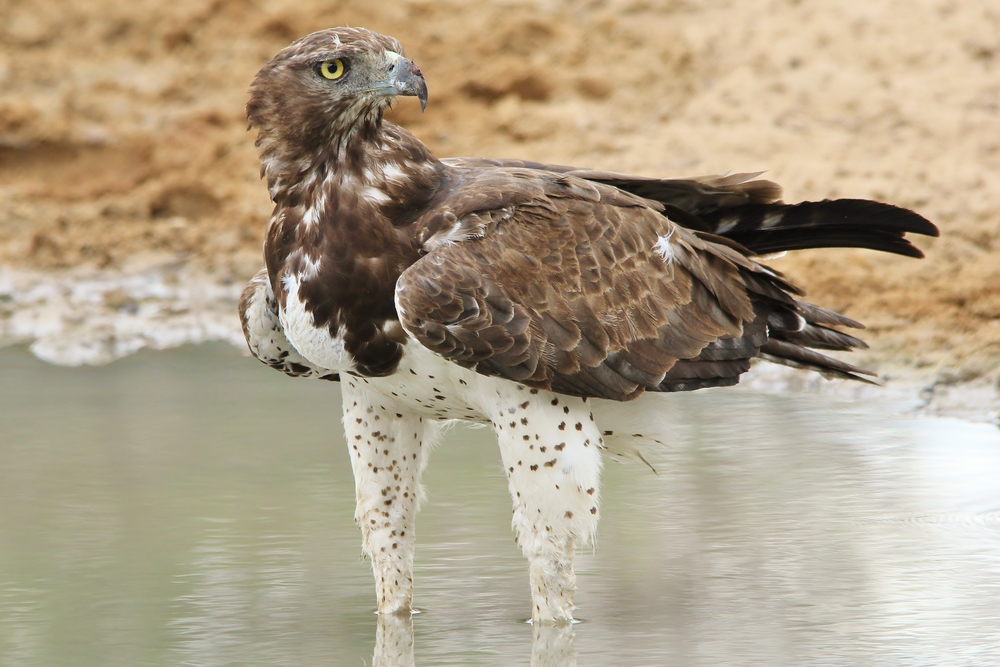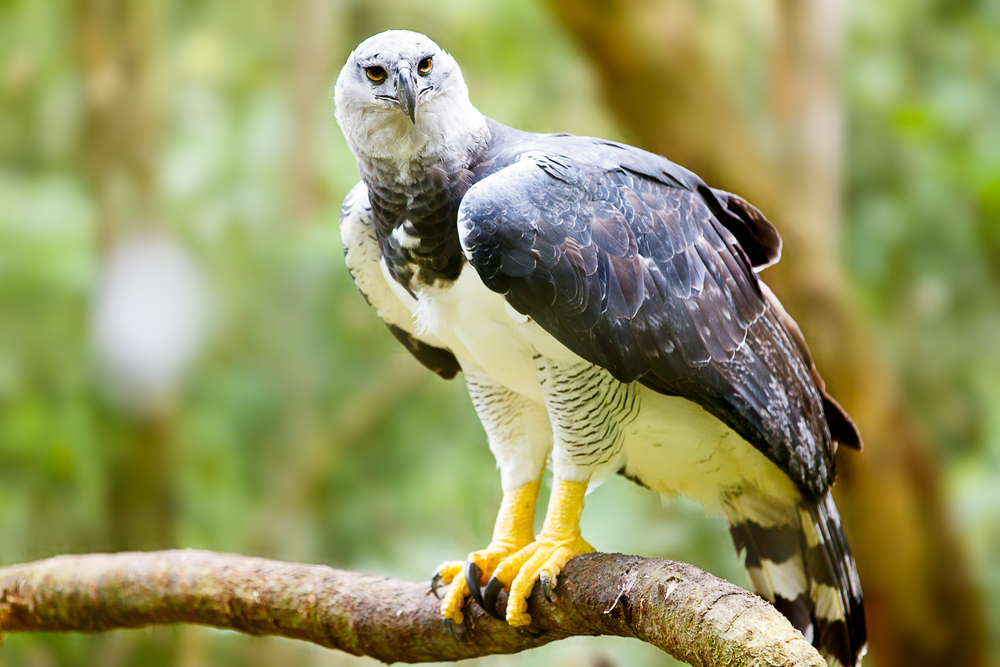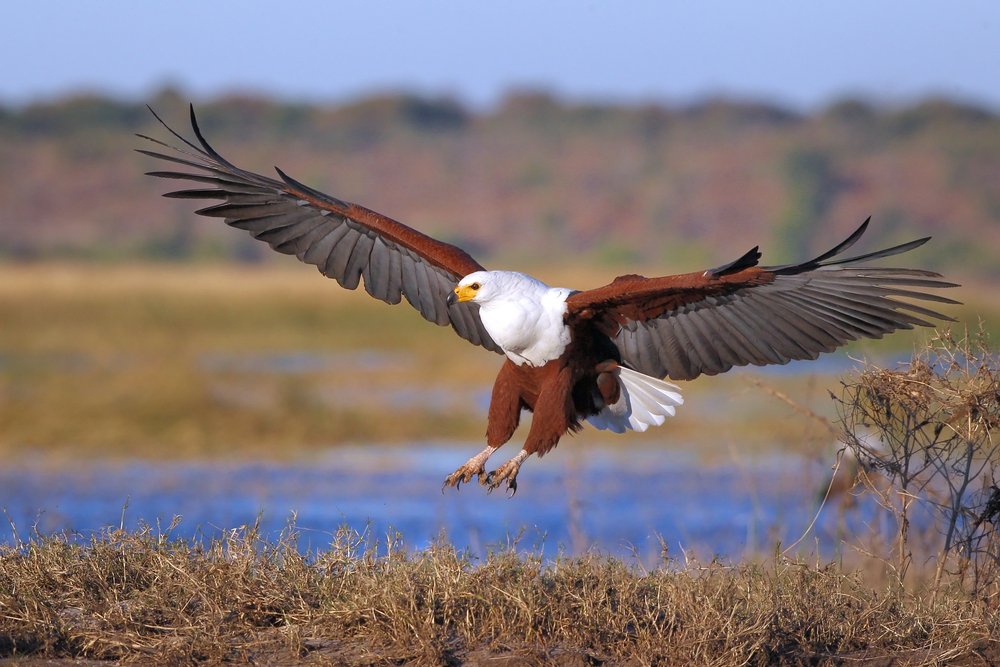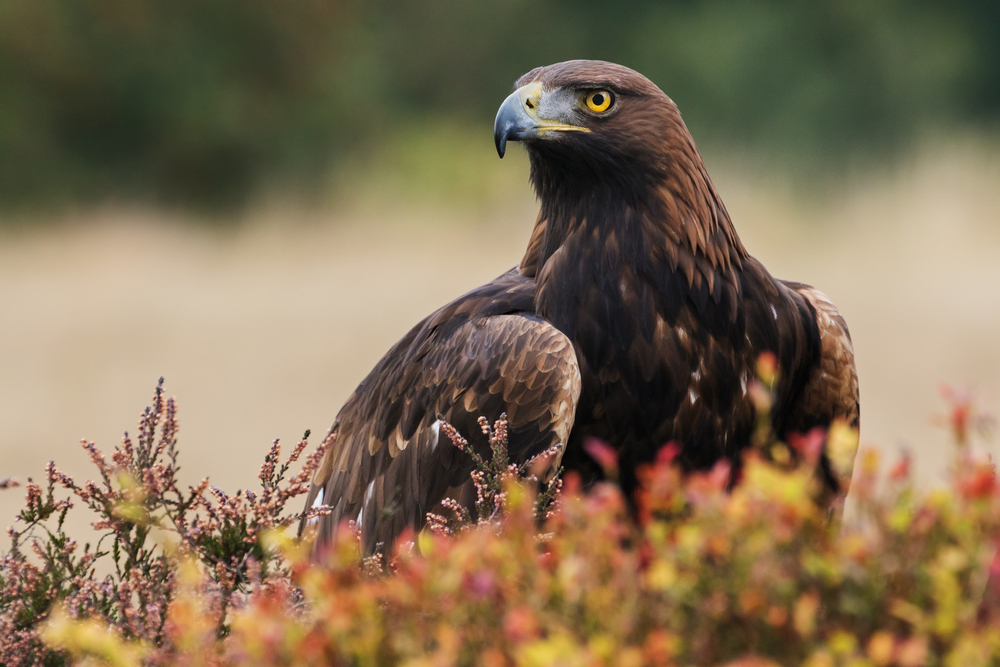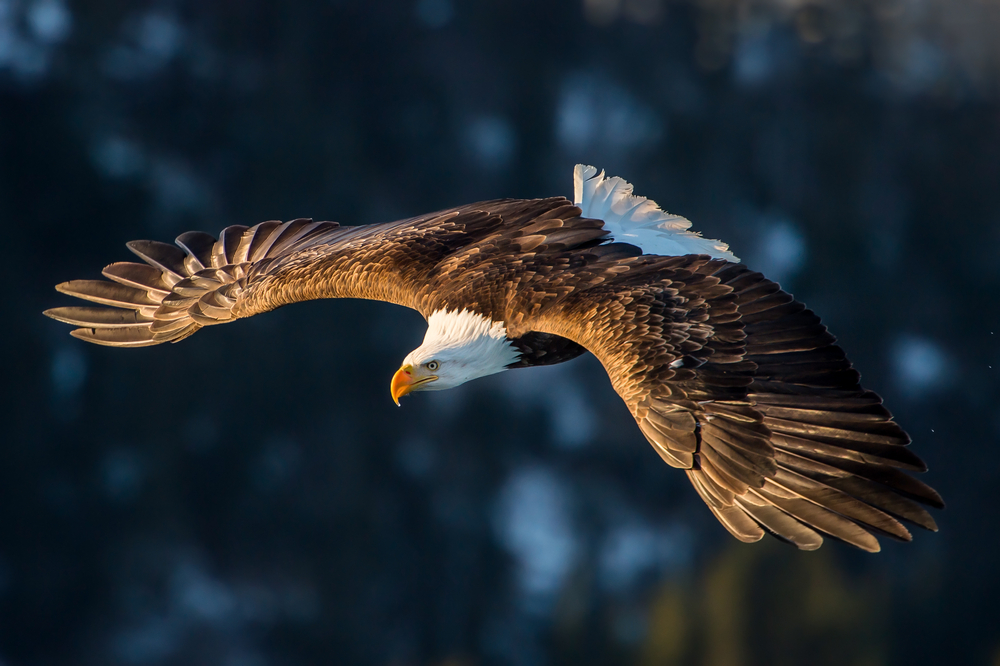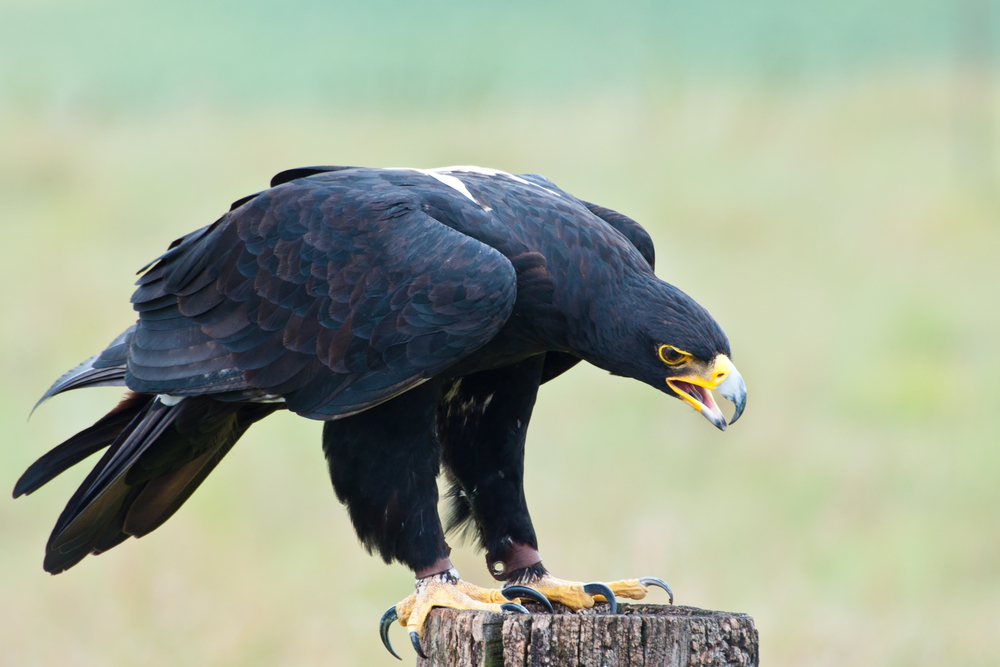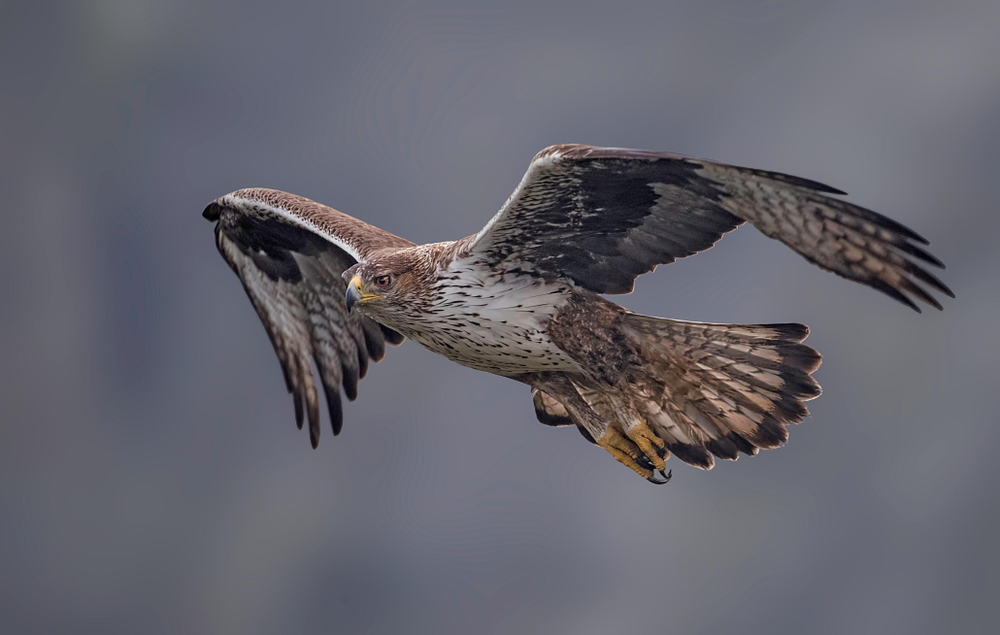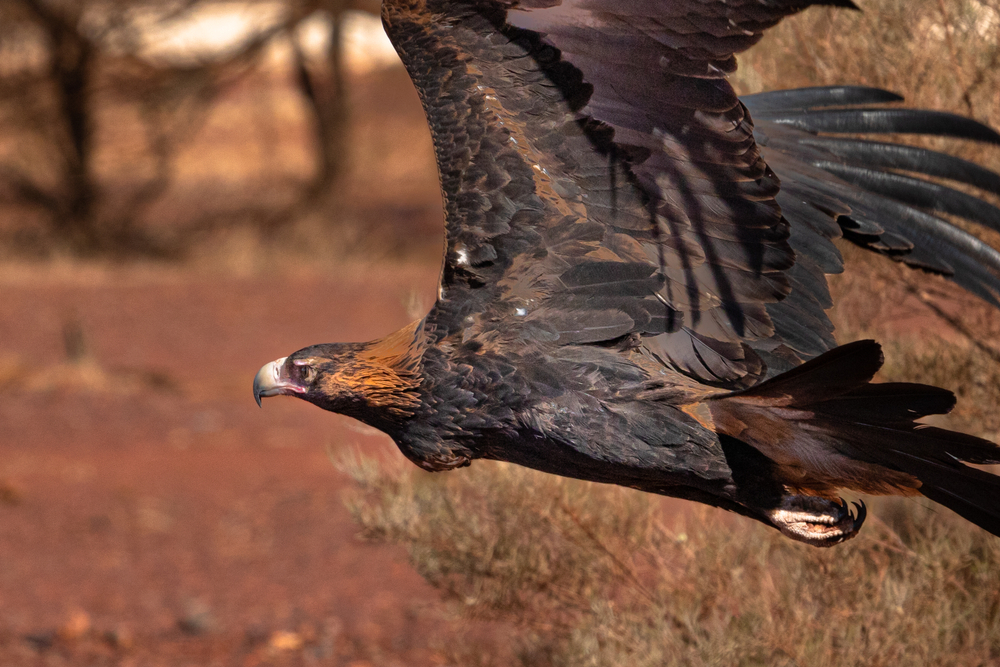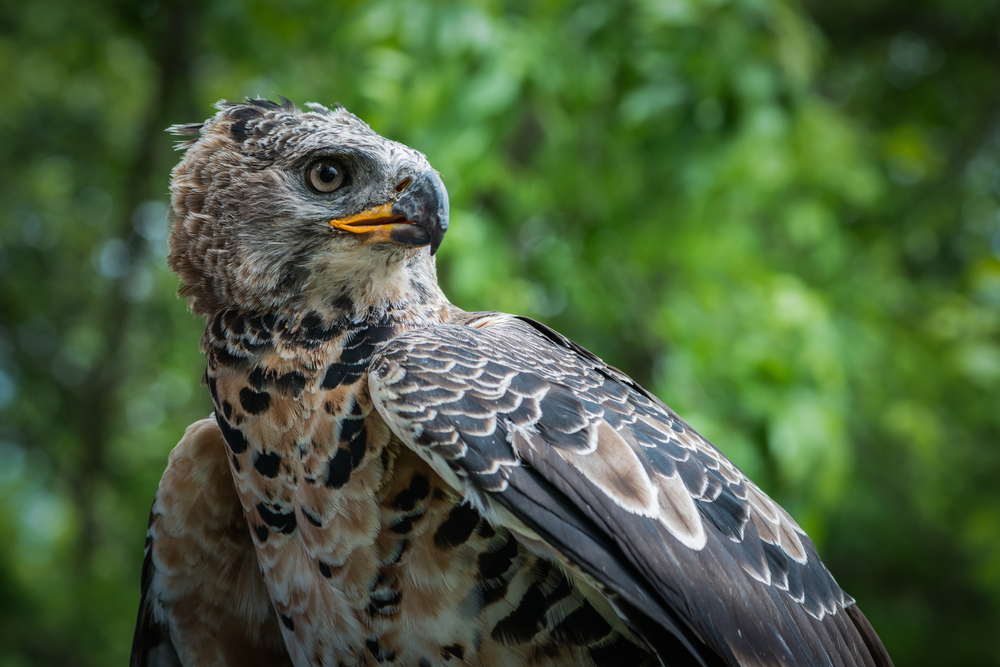The Spanish Imperial Eagle’s closest relative is the Eastern Imperial Eagle (Aquila heliaca), with which it was once considered the same species. Genetic studies now classify it as a distinct species, endemic to the Iberian Peninsula.
About
The Spanish Imperial Eagle is one of Europe’s rarest birds of prey and a conservation success story, found mainly in central and southwestern Spain with smaller populations in Portugal. Once on the brink of extinction due to habitat loss, poisoning, and persecution, it has made a steady recovery thanks to intensive conservation programs. Also called the Iberian Imperial Eagle, it is recognized for its powerful build, broad wings, and contrasting plumage—dark brown body feathers accented by striking white shoulders and lighter markings on the head.
Adults typically measure 72–85 cm (28–33 in) in length, with a wingspan of 180–220 cm (6–7.2 ft). They are apex predators in their ecosystems, preying primarily on rabbits, though their diet may also include waterfowl, partridges, and carrion when rabbits are scarce. Their hunting style is a blend of soaring over open terrain and ambush from perches, demonstrating both patience and strength.
Breeding occurs between February and April. Pairs build large stick nests in tall trees, often within protected forests or dehesa woodlands, and typically lay 1–4 eggs. Both parents share responsibilities for incubation and feeding. Chicks fledge after about 65 days, but survival rates depend heavily on food availability. In the wild, these eagles can live up to 20–25 years.
The scientific name of the Spanish Imperial Eagle is Aquila adalberti, and it belongs to the family Accipitridae, which also includes other powerful eagles, hawks, and kites. Once classified as Critically Endangered, the species is now listed as Vulnerable on the IUCN Red List, with its population rising due to legal protections, habitat restoration, and reintroduction efforts. As one of the rarest eagle species worldwide and a symbol of Iberian biodiversity, the Spanish Imperial Eagle represents both the fragility of ecosystems and the success that conservation can achieve.
Physical Characteristics
The Spanish Imperial Eagle (Aquila adalberti), also called the Iberian Imperial Eagle, is one of the rarest raptors in the world and is found almost exclusively on the Iberian Peninsula.
Plumage:
Adults are mostly dark brown, with a striking contrast of white shoulder patches (“epaulettes”), a distinguishing feature from other large eagles. Their head and nape are pale golden-buff, creating a crown-like effect, while the tail is gray with dark barring. Juveniles are much paler, with an overall tawny to rufous coloration that gradually darkens with age.
Head and Face:
They have a robust head with piercing pale yellow to amber eyes and a strong, hooked bluish-gray beak. Their pale golden nape is one of their most regal traits.
Body and Wings:
The body is large and muscular, with broad wings and a medium-length tail adapted for soaring over open woodlands and plains. Their silhouette in flight shows long, rectangular wings with splayed primaries and the distinctive white shoulders visible from above and below.
Size:
-
Length (Body): 28 to 33 in (70 to 84 cm)
-
Wingspan: 72 to 84 in (180 to 215 cm)
-
Tail Length: 12 to 14 in (30 to 36 cm)
Weight:
-
Males: 6.6 to 8.8 lbs (3 to 4 kg)
-
Females: 8.8 to 10.5 lbs (4 to 4.8 kg), larger and heavier than males.
The Spanish Imperial Eagle’s white shoulder patches, golden nape, and commanding build make it one of the most striking and easily identified eagles of Europe.
Reproduction
The Spanish Imperial Eagle has a slow reproductive cycle typical of large raptors, with strong pair bonds and high parental care.
1. Mating and Courtship:
Spanish Imperial Eagles are monogamous, often forming lifelong pairs. Courtship displays include aerial acrobatics, circling, and dramatic dives. Pairs maintain and defend large territories, often reusing traditional nesting sites for generations.
2. Nesting:
Nests are large stick platforms built in tall pine, cork oak, or holm oak trees, sometimes on cliffs. Nests are reused and refurbished annually, often growing massive in size after years of use.
3. Egg-Laying:
The female lays 1 to 4 eggs, most commonly 2, between March and April. Eggs are white to pale cream with reddish or brown speckles.
4. Incubation:
Incubation lasts about 40 to 43 days, performed mostly by the female while the male provides food.
5. Raising Chicks:
Chicks hatch with white down and are brooded intensively for the first two weeks. Both parents feed the young, tearing prey into smaller portions. Sibling rivalry is common, with the stronger chick often outcompeting the weaker one.
6. Fledging and Independence:
Young eagles fledge at about 63 to 77 days of age but may remain dependent on their parents for several more weeks, gradually learning to hunt before dispersing from the natal territory.
The reproductive strategy of the Spanish Imperial Eagle—low clutch size, high parental investment, and slow maturity—makes it especially vulnerable to environmental pressures, but ensures strong survival chances for fledged chicks.
Lifespan
The Spanish Imperial Eagle is a long-lived raptor, but its survival is closely tied to conservation, as it remains one of the rarest eagle species in the world.
Lifespan in the Wild:
In natural conditions, Spanish Imperial Eagles typically live 20 to 25 years, with some individuals reaching 30 years if they survive the challenges of their juvenile years. Mortality is highest in the first year of life due to inexperience and environmental threats.
Lifespan in Captivity:
In protected environments such as conservation programs or zoos, they can live up to 35 years, benefitting from veterinary care, secure enclosures, and a steady food supply.
Threats to the Spanish Imperial Eagle:
-
Electrocution: Power line collisions and electrocution are the leading causes of unnatural mortality.
-
Habitat Loss: Agricultural expansion and deforestation reduce nesting sites and hunting grounds.
-
Persecution: Historically persecuted by humans, though now legally protected.
-
Food Scarcity: Declines in rabbits, their primary prey, directly impact breeding success.
-
Slow Reproduction: With relatively small clutch sizes and long parental care, population recovery is slow.
Care and Protection:
Conservation efforts in Spain and Portugal, including habitat restoration, prey management, power line insulation, and anti-poisoning campaigns, have helped stabilize and even increase populations in recent decades.
The Spanish Imperial Eagle’s long lifespan but extremely low numbers make it a conservation-dependent species, a flagship for raptor protection in Europe.
Eating Habits
The Spanish Imperial Eagle is a carnivorous raptor with a diet strongly tied to the availability of medium-sized prey in its Iberian habitats.
Diet:
Its primary prey is the European rabbit, which historically made up the bulk of its diet. With rabbit populations declining due to disease and habitat loss, Spanish Imperial Eagles have adapted by hunting partridges, ducks, pigeons, crows, hares, and small mammals. They may also scavenge carrion when live prey is scarce.
Hunting Strategy:
These eagles are active, diurnal hunters, often using soaring flight over open woodlands and plains to spot prey. They also hunt from perches, launching swift, direct attacks on unsuspecting animals.
Killing Technique:
Prey is seized with powerful talons, often killed instantly by impact. Larger prey is subdued with repeated blows and torn apart with the hooked beak.
Feeding Behavior:
Spanish Imperial Eagles usually hunt alone or in pairs. Prey is consumed at the capture site or carried back to nests during breeding season. Chicks are fed carefully portioned prey pieces by both parents.
Special Considerations:
-
Dependence on Rabbits: Population declines in rabbits directly reduce breeding success, making the eagle highly vulnerable to prey fluctuations.
-
Opportunistic Diet: When rabbits are scarce, they shift to birds and carrion, showing dietary flexibility.
-
Ecosystem Role: As top predators, they help regulate rabbit populations and contribute to ecosystem balance.
The Spanish Imperial Eagle’s historic reliance on rabbits, combined with its adaptability to other prey, highlights both its ecological role and the conservation challenges linked to prey availability.
Uniqueness
The Spanish Imperial Eagle is one of Europe’s rarest and most emblematic raptors, admired for its striking plumage, cultural importance, and remarkable conservation story.
Endemic to Iberia:
This eagle is found almost exclusively on the Iberian Peninsula, making it one of the few eagle species with such a restricted range. Its survival is tightly linked to Spain and Portugal’s landscapes.
Distinctive Markings:
It is easily identified by its white shoulder patches (“epaulettes”), dark brown body, and pale golden nape, giving it a regal and unmistakable appearance compared to other large eagles.
Rabbit Specialist:
Historically, it was a rabbit specialist, depending on European rabbit populations for survival. This dietary link made it highly vulnerable to rabbit declines caused by myxomatosis and rabbit hemorrhagic disease.
Conservation Success Story:
Once considered on the brink of extinction with fewer than 50 pairs in the 1970s, intensive conservation efforts—including nest protection, prey management, and power line modifications—have helped populations rebound. Today, the species is a flagship for raptor conservation in Europe.
Cultural Symbol:
In Spain, the Spanish Imperial Eagle is a national symbol of pride and natural heritage, representing both the fragility of endangered species and the success of conservation.
The Spanish Imperial Eagle’s endemic range, striking plumage, and remarkable recovery from near-extinction make it one of the most unique and celebrated raptors in the world.
Be the First to Share Photos of This Species.
FAQ’s
1. What is the closest species to the Spanish Imperial Eagle?
2. How does the Spanish Imperial Eagle compare to other eagles?
The Spanish Imperial Eagle is slightly smaller than eagles like the Golden Eagle, but it is easily identified by its white shoulder patches and golden nape. Unlike open-country hunters such as the Martial Eagle, it specializes in woodland edges and plains. Its close tie to rabbit populations sets it apart from other large eagles with more varied diets.
3. What national parks provide the best chance to see a Spanish Imperial Eagle?
This species is restricted to Spain and Portugal. Some of the best places to see it include Doñana National Park, Sierra de Guadarrama National Park, and Monfragüe National Park in Spain, as well as Tejo Internacional Natural Parkin Portugal.



































































